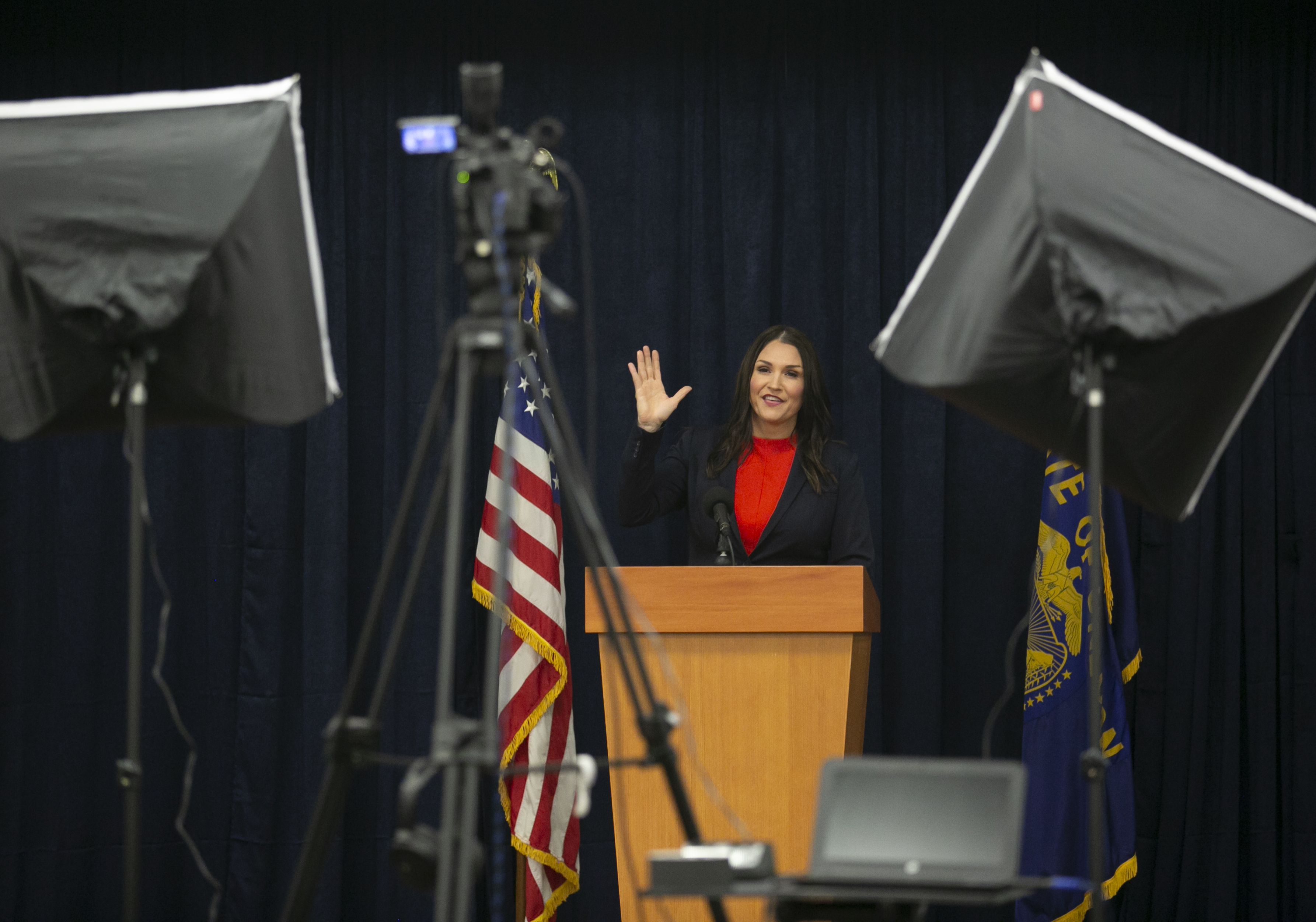
Campaign finance activists have filed a legal challenge against a recent ruling by Oregon Secretary of State Shemia Fagan shown giving her acceptance speech after winning in the 2020 election. Activists say Fagan improperly rejected their ballot measures, jeopardizing the state’s ability to rein in campaign spending.
Kristyna Wentz-Graff / OPB
For the second time this election cycle, a ruling by Secretary of State Shemia Fagan appears primed to land before the Oregon Supreme Court.
On Wednesday, petitioners behind three proposed ballot measures to set limits on campaign giving in Oregon asked the court to reverse Fagan’s decision to reject their proposals. The petitioners — James Ofsink, Rebecca Gladstone and Jason Kafoury — say Fagan improperly rejected their measures, jeopardizing the state’s ability to rein in campaign spending.
“Our elections are among the most expensive per capita in the U.S.” Gladstone said in a statement. “We call on the Supreme Court to accept our petition and reverse the Secretary’s unprecedented new requirements, so voters can restore balance to Oregon democracy.”
If justices accept the petition, it would be the second time in a little more than a month that the state’s highest court has agreed to give Fagan’s reading of election law a once-over, with potentially important precedents in the balance.
On Thursday, the state Supreme Court is expected to rule on Fagan’s decision to reject former New York Times columnist Nick Kristof’s candidacy for governor. The secretary found in January that Kristof did not meet the three-year residency requirement for becoming governor. Fagan concluded he lived and voted in New York state in 2020.
Kristof’s case, however it comes out, will likely offer new legal certainty about how the state’s constitutional residency requirement for governor should be interpreted by election officials. In the process, it would fundamentally shape a Democratic gubernatorial primary in which Kristof, with his prodigious fundraising, could be a big player.
The questions presented in the other case are more nuanced, but still could have major implications for this election year.
Fagan rejected initiative petitions 43, 44, and 45 because of her reading of a 2004 case in the Oregon Court of Appeals. Based on that opinion, Fagan ruled that the measures did not meet a constitutional requirement that they write out, in full, the language of any law they would alter even slightly.
Article IV, section 2 of the state constitution says that: “An initiative petition shall include the full text of the proposed law or amendment to the Constitution.”
In the case of IPs 43-45, the petitioners proposed changing a subsection of the state’s law against bribery by fewer than 20 words. But they failed to also include another subsection of the law that they didn’t want to touch.
Fagan says that was a mistake. Consistent with a similar determination she made in rejecting a measure last year, she barred the proposed campaign finance measures from moving forward.
“I am disappointed to announce that the petitioners for three campaign finance measures failed to meet the constitutional requirements in their petition filing,” Fagan said in a Feb. 9 release. “Initiative Petitions 43, 44, and 45 do not include the full text of the law they seek to amend, which is a long-standing requirement in the Oregon Constitution.”
In their filing Wednesday, the backers of those proposals say Fagan is misapplying the law.
For starters, they say, the 2004 Court of Appeals decision she used to reject their measures was rendered moot before the Oregon Supreme Court could decide whether it was correct. That outcome, they argue, means it should not be used as legal precedent. Instead, they point to a 2007 court ruling, later affirmed by the state Supreme Court, they argue proves that they only needed to include the piece of law they proposed to change.
The petitioners also say Fagan’s reading of the law doesn’t jibe with history. The “full text” requirement laid out in the Constitution was added in 1902, they argue, well before Oregon had a running list of Oregon Revised Statutes updated regularly. Until 1953, legal changes made by the Legislature were printed in volumes every two years, but only brought together in a single document roughly once a decade.
That piecemeal approach, petitioners say, would have made it impractical to include every scrap of potentially attached law, when proposing voters amend a single piece of statute.
“It is the full text of the measure, a proposed law, that must be included; not the full text of unchanged laws on similar or related topics,” the lawsuit says. “Yet, this is what the Secretary is demanding.”
The petitioners point out a fact that Fagan’s office has conceded: Past secretaries have read the law differently, and allowed ballot measures to proceed without including the entire section of law that would be amended in part.
Ofsink, Gladstone and Kafoury, argue in their petition that a review by the Supreme Court is the only possible way to get one of their measures before voters this year. In order to qualify a measure for the November ballot, they must gather more than 112,000 by July 8.
The ballot proposals differ in their specifics, but each would create new limits on how much money individuals, advocacy groups, labor organizations, corporations and political parties can contribute to candidates and causes. They also include requirements that political advertisements display top donors, and that so-called “dark money” groups reveal their funding sources if they engage in campaigning.
Oregon is one of a handful of states that places no limits on how much an individual or entity can give to candidates, a fact that has helped campaign spending explode in recent elections. But voters have signaled they’re eager to end that trend. A ballot measure that altered the state Constitution to formally allow limits on campaign giving passed in a landslide in 2020.



